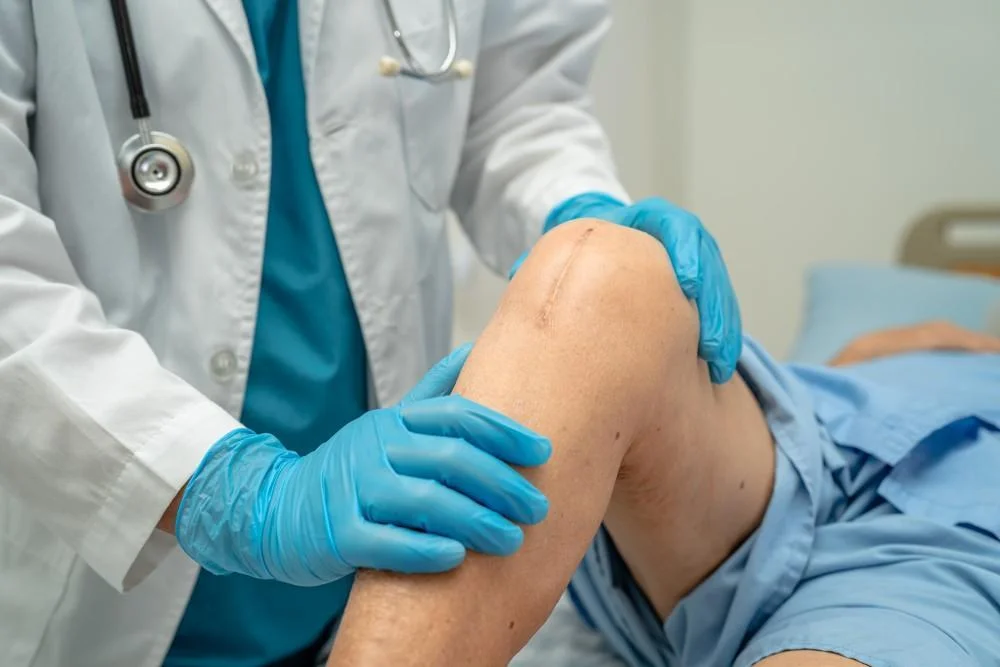Understanding Robotic Knee Replacement
Robotic knee replacement is an innovative surgical technique that combines the precision of robotic-assisted technology with the expertise of orthopaedic surgeons to replace a damaged knee joint. This cutting-edge approach ensures accurate placement of knee implants, leading to improved knee alignment, enhanced joint function, and better overall patient outcomes.
During a robotic knee replacement, a 3D virtual model of the patient’s knee is created using advanced imaging technology. The robotic system assists the surgeon in navigating the joint and positioning the implant with unparalleled accuracy, resulting in a more natural feeling knee post-surgery.

Do You Require Robotic Knee Replacement?
If you are suffering from severe knee pain, limited mobility, or have been diagnosed with advanced osteoarthritis or other degenerative knee conditions, robotic knee replacement may be a suitable treatment option for you. This procedure is particularly beneficial for patients who require complex or revision knee replacement surgery.
Signs You May Need Robotic Knee Replacement:
- Severe and Persistent Knee Pain
- Difficulty Walking or Standing
- Chronic Knee Swelling and Inflammation
- Limited Range of Motion and Stiffness
- Failed Previous Knee Surgeries
- Progressive Degeneration of the Knee Joint
- Impact on Daily Activities and Quality of Life
If you are experiencing these symptoms or have been advised to consider knee replacement surgery, it is essential to consult with an experienced orthopaedic specialist for a comprehensive evaluation. Dr. Safiuddin Nadwi and the team at Dr. Joints are dedicated to providing personalized and effective orthopaedic care to help you regain mobility, alleviate pain, and improve your quality of life.
Advantages or Benefits of Robotic Knee Replacement:
- Enhanced Surgical Precision: Robotic assistance allows for more accurate placement of the knee implant, leading to improved joint alignment and function.
- Faster Recovery Time: The precise nature of robotic knee replacement can result in less tissue damage and a quicker recovery compared to traditional knee replacement surgery.
- Customized Treatment: The 3D virtual modeling enables personalized surgical planning tailored to each patient’s unique anatomy.
- Reduced Risk of Complications: The advanced robotic technology minimizes the risk of errors during surgery, leading to improved patient safety.
- Long-lasting Results: When performed by an experienced orthopaedic surgeon, robotic knee replacement can provide long-lasting relief from knee pain and improved joint function.
Why Choose Dr. Joints for Robotic Knee Replacement:
Choosing Dr. Joints for robotic knee replacement means opting for surgical excellence, innovative technology, and compassionate care. Contact us today to learn more about how Dr. Safiuddin Nadwi and his dedicated team can help you achieve improved mobility and a better quality of life.
FAQs on Robotic Knee Replacement
Candidates for robotic knee replacement typically have complex knee conditions or require revision surgery and are in good overall health.
Recovery time can vary, but many patients experience a quicker recovery due to the precise nature of robotic-assisted surgery.
Like any surgical procedure, there are risks involved, including infection, blood clots, and complications related to anesthesia. However, these risks are minimized with the use of robotic technology and when performed by an experienced orthopaedic surgeon like Dr. Joints.
Yes, physical therapy is an essential part of the recovery process and can help improve strength, flexibility, and range of motion in the knee.
With proper care and maintenance, the implants used in robotic knee replacement can last for many years, providing long-lasting relief from knee pain and improved joint function.
Recovery time can vary depending on the individual, but many patients are able to return to normal activities within a few weeks to a few months following the procedure.
As with any surgical procedure, there are risks involved, including infection, blood clots, and complications related to anesthesia. However, these risks are generally low when the procedure is performed by an experienced orthopedic surgeon like Dr. Joints.
Yes, physical therapy is an important part of the recovery process and can help improve strength, flexibility, and range of motion in the knee.
With proper care and maintenance, knee resurfacing implants can last for many years, providing long-lasting relief from knee pain and improved function.

